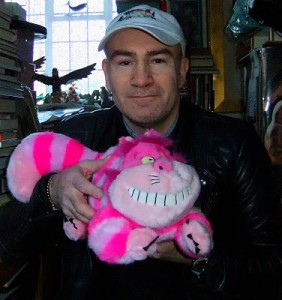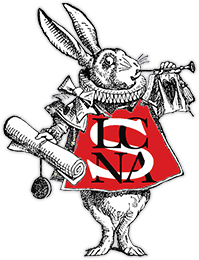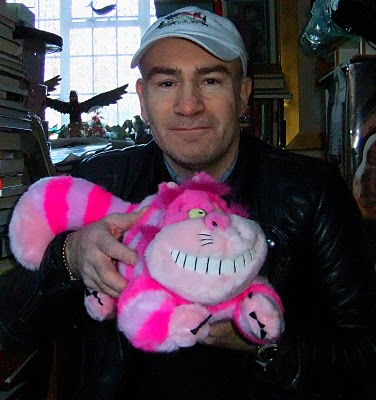
Cryptozoology, according to the Wikipedia, “refers to the search for animals which are considered to be legendary or otherwise nonexistent by the field of biology. ” Dr Karl Shuker, according to his own bio, is “one of the best known cryptozoologists in the world.” Wikipedia describes him as “full-time freelance zoological consultant, media consultant, and noted author specializing in cryptozoology.” He is author of dozens of books, such as 2010’s Karl Shuker’s Alien Zoo, and he is currently working on his second book on “mysterious and mythical cats,” (the first was the “seminal” Mystery Cats of the World from 1989, out of print), called I Thought I Saw The Strangest Cat… Phantom Cats (again according to Wikipedia) “are a common subject of cryptozoological interest, largely due to the relative likelihood of existence in comparison to fantastical cryptids lacking any evidence of existence, such as Mothman.”
Dr Shuker gave us a sneak peak of this forthcoming book on his blog ShukerNature last week, posting a lengthy excerpt about the Cheshire Cat! Read the whole thing here, and here are the first few paragraphs:
Ever since Lewis Carroll’s classic children’s book was first published in 1865, literary scholars, Carrollian biographers, and cat-lovers alike have debated the source of one of its most enigmatic characters – the famously evanescent Cheshire Cat, with its maniacal, detachable grin! What was Carroll’s inspiration for such a surreal creation?
To begin with: as there is no such breed as a Cheshire cat, where did its name originate? Unlike most of its history, however, this seems to be quite straightforward.
Born in 1832 at Daresbury in rural Cheshire, Lewis Carroll (whose real name was Charles Lutwidge Dodgson) spent much of his childhood there and later at Croft, a little further north. Consequently, he would have frequently encountered various of the local farm, pet, and stray cats – in other words, cats of Cheshire.
Moreover, as pointed out by Martin Gardner in The Annotated Alice (1960), there was a popular saying, current during Carroll’s time – “Grin like a Cheshire cat” – which must also, surely, have influenced his choice of a name for his fictitious feline.
Hardly surprisingly, that phrase has been mooted by several scholars as the origin of the Cheshire Cat’s synonymous smile too – but there are a number of other, equally compelling claimants for that particular honour. For example, it is well known that during the period when Carroll and his family lived in Cheshire, there were several inns whose signboards portrayed broadly-grinning lions; their incongruous visages would undoubtedly have attracted the attention of anyone so captivated by the allure of the ludicrous as Carroll.
Notwithstanding this, he needed to look no further than his home county’s celebrated cheeses for immediate inspiration. In her book Lewis Carroll: A Biography (1979), Anne Clark noted that a renowned medieval inhabitant of Chester, John Catheral, whose coat-of-arms from 1304 included a cat, always bared his teeth in a grin when angry – and died with a smile on his face, quite literally, while defending his beloved town. In honour of his valour, a longstanding tradition arose whereby Cheshire cheese-makers would mould their cheeses into the shape of a cat, and carve a wide grin upon its face. Once again, Carroll would certainly have seen such cheeses, and would have known the origin of their unusual form.



